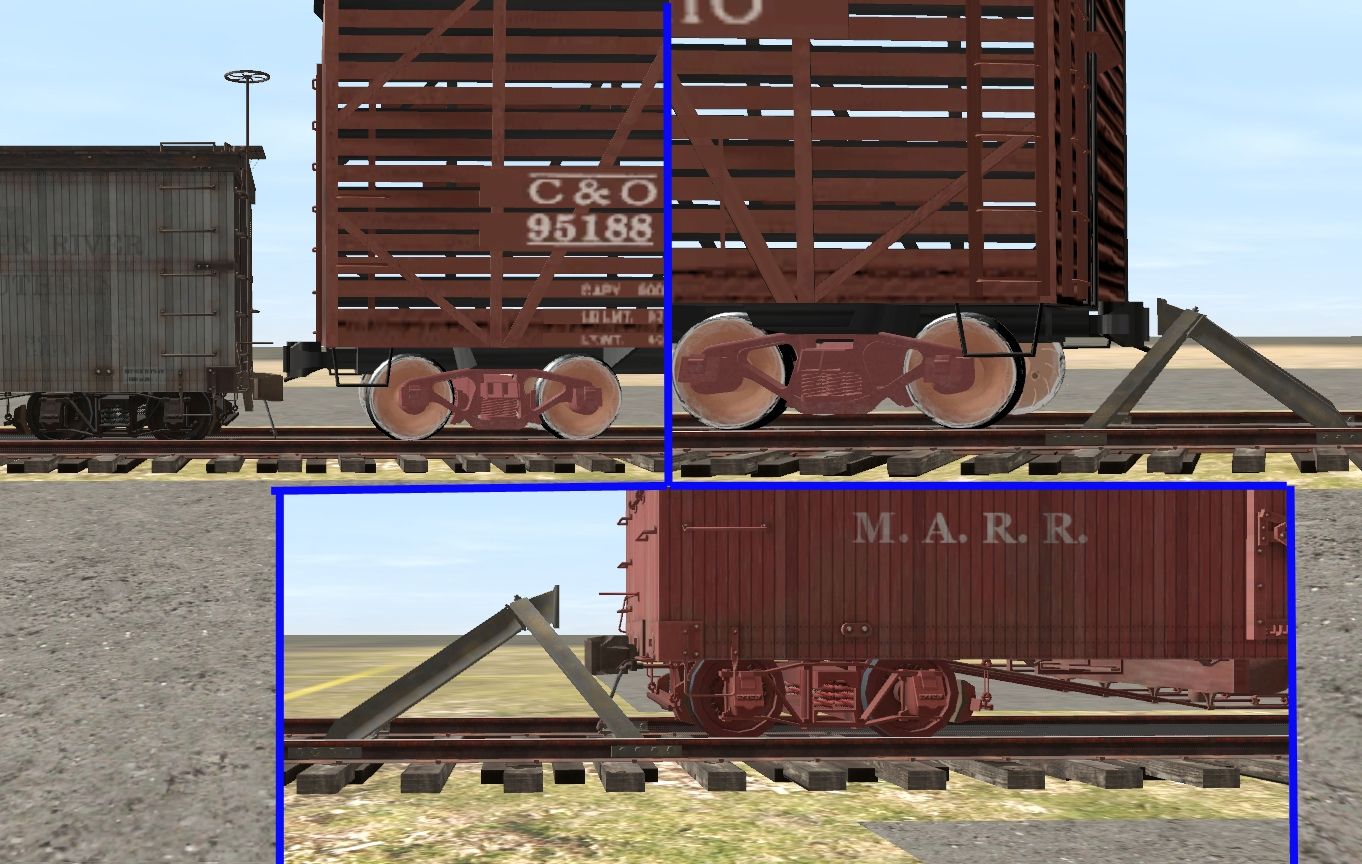Frank_Dean
Well-known member
I recently made some North American-style end-of-track bumpers based on Hayes Bumping Posts for 1435 mm track. I received a suggestion asking if I could adapt any of them for narrow gauge tracks (3 ft, 30 in and 2 ft). Apart from the track gauge, I realized that the height of the impact zone is different for 3-foot track.
Is this normal, or is it a design error?
What would be the correct height for narrow gauge tracks?
In the attached image, you can see the height of the couplers for standard and 3-foot gauge tracks in Trainz, as well as a comparison of the height with the Hayes Bumping Posts.

Is this normal, or is it a design error?
What would be the correct height for narrow gauge tracks?
In the attached image, you can see the height of the couplers for standard and 3-foot gauge tracks in Trainz, as well as a comparison of the height with the Hayes Bumping Posts.

